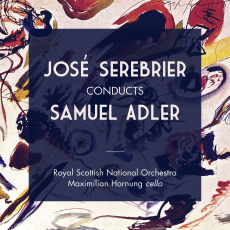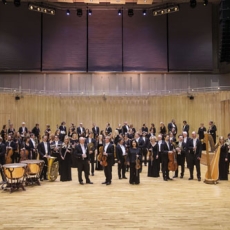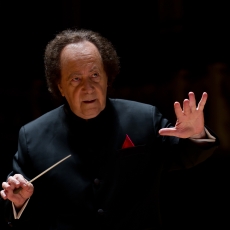RSNO - Serebrier Conducts Adler - MusicWeb International
The symphony has seen a
pretty dramatic revival in its fortunes during the last half century. Beyond
the 296 (and counting) symphonies by Leif Segerstam, who stands not only as
today's most prolific symphonist but almost certainly the most prolific of all time,
it seems that symphonies are now being produced with remarkable fecundity. But
numerical quantity is no measure of musical quality, and with so few of
Segerstam's symphonies currently available on CD, few of us have any way of
knowing how good (or otherwise) they are. On the other hand, the sixth symphony
of Samuel Adler, performed and recorded here for the first time, is clearly a
work of considerable and sustained musical worth.
An introductory note by Robert Beaser (a friend of
the composer who attended the recording sessions at the RSNO's Glasgow home)
accuses critics of lumping American music into "a series of isms" and, since
Samuel Adler does not fall into any one of these, overlooking his work. I'm a
critic and I have to confess to never once having thought of American music as
a series of isms; more than that I have a long and enduring admiration for the
craftsmanship of Adler's music. And while it would be churlish to point out
that Adler is, by birth, German (he emigrated to the USA in 1939 at the age of
11), he certainly stands at the forefront of that group of composers (not
restricted to the USA) who work within established classical models. His output
includes four oratorios, five operas, ten string quartets, fourteen concertos
for various solo instruments and six symphonies.
Completed in 1985 Adler's Sixth Symphony is a taut
and closely argued three-movement work lasting some 25 minutes and scored for a
conventional symphony orchestra. The work is primarily involved in energy, and
Adler in his own note suggests it was inspired "by the idea of feeling the
energy of our time". It certainly gets a hugely energetic performance from the
Royal Scottish National Orchestra here, who press purposefully through its
virtuoso demands helmed with unerringly sharp focus by José Serebrier. It's a
splendid orchestral tour de force which showcases every section of a very fine
orchestra indeed in a vivid recording.
All is not remorseless energy and high-octane
tension on the disc, however, and the Cello Concerto, dating from 1995,
certainly opens on a note of tranquil reflection. It continues to unfold in a
gracefully spacious manner, ratcheting up tension in small stages and often
using the solo instrument to add a layer of calm introspection to proceedings.
Maximilian Hornung understands this music and captures the frequent and often
disarming changes of moods. Adler writes that "a concerto to me is a dialogue
between soloist and orchestra", and he is as good as his word here in a work
where the conversational interplay is very much to the fore. The third of the
four movements (labelled in Adler's characteristically fulsome English-language
movement titles "Slowly and declamatory, feeling very free") takes the form of
an accompanied cadenza in which the solo cello is joined by a variety of
instruments which mirror the various colours the soloist creates. It is this
highly intelligent use of orchestral colour which is perhaps Adler's most
distinctive quality.
That aspect of his writing is well displayed in the
concluding item on the disc, a nine-minute orchestral piece carrying a title
derived from the poetry of Louise Glück. Written in memory of the wife of one
of the patrons of the Las Vegas Symphony Orchestra, who gave the first
performance in 2010, Drifting on Winds and Currents is intellectually impressive.


